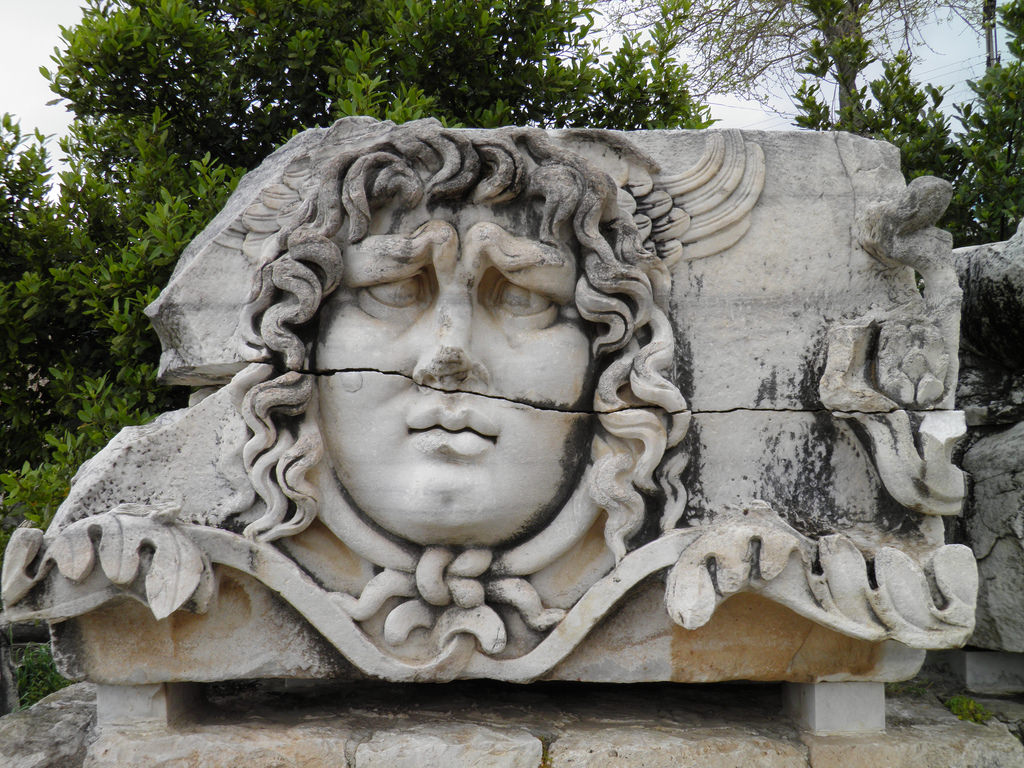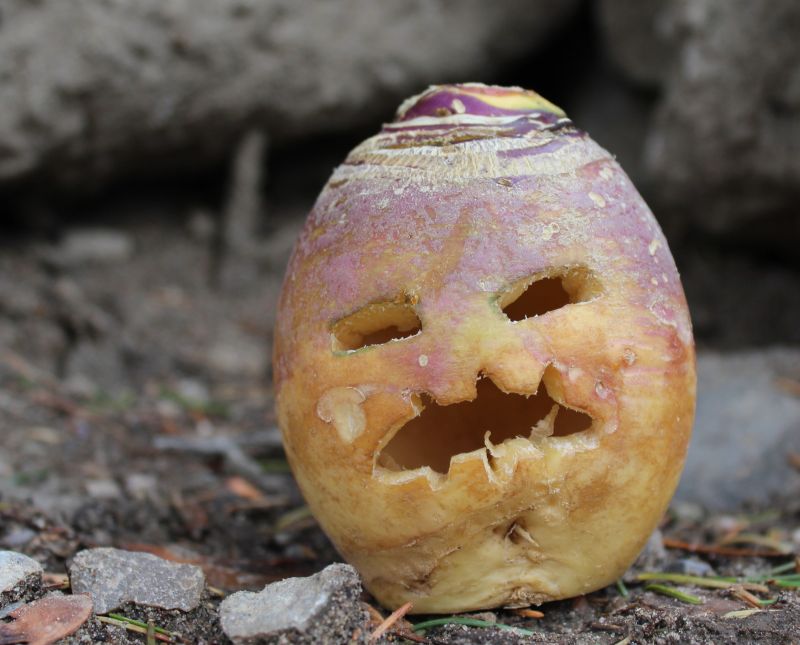Weird Squash, Odd Jewelry
By Amy Barr with The Lukeion Project
Apotropaic comes from Greek αποτρέπειν "to ward off." It comes from από- "away" and τρέπειν "to turn,” specifically “to ward off evil.” Every world culture has a superstitious quirk or two that people employ in an effort to ward off evil (or maybe even bring good luck). True to human nature, we might think our grandmother’s admonition to avoid walking under ladders or opening umbrellas in the house sounds as normal as decorating the barn with a lucky horseshoe. We are less likely to accept superstitious quirks from other cultures as normal, so I have collected a few here to entertain us all.
If one wanted to ward off evil in ancient Greece, one would decorate clothes, buildings, or jewelry with the face of a gorgon to stop evil in its tracks just like Medusa could drop you dead like a rock with just one glance. The gorgon’s face was not pleasant. It had fangs, wild eyes, a protruding tongue, and unruly hair. Now that I think about it, this also describes me before I have had some coffee in the morning.
A gorgon’s face was a standard ornament for armor but also used in architecture, clothing, rugs, and jewelry. According to standard mythology, the Greek goddess Athena put on her dad’s favorite jacket, the Aegis, and then decorated it with a gorgon’s face as a fitting example to humans about the proper way to turn away evil while dressing well.Likely related to the scary gorgon’s face was the representation of eyes, either as a set or singleton, to intimidate evil. Drawing a single eye was much easier than illustrating a gorgon. For the art impaired, drawing an eye was a cheap, fast, easy means to ward off malevolent glares. In ancient Greece there were eyes on cups (lest one swallow evil) and ships (shipwrecks were a big problem). If you visit modern Greece or much of the eastern Mediterranean, you will see a similar symbol adorning everything from buses and homes to fine jewelry. The iconic Mati or blue eye often appears in a lovely Aegean blue glass (much nicer than the fanged googly-eyed original). These make a lovely way to give evil the boot.
The Romans chased off evil or envious glances with jokes and funny pictures. Both the Greeks and Romans used images or charms of (ehem) a certain body part to scare away evil. These charms – often used for earrings, lamps, or necklaces—were called fascinum/fascina. The term “fascinating” comes from the name of these (ehem) charms. The term was meant to imply that one had been put under a spell. The term may or may not have anything to do with the fasces, the bundle of rods and an ax carried by lictors before the Roman consul. Fasces, not fascina, led to the modern term “fascism.”
Meanwhile, back to scary faces: gargoyles were ugly enough to scare evil away from important buildings in Europe. The English term “hunky punk” described grotesque scary carved architectural bits, but I think it might fit for some members of boy bands.
If one wanted an affordable home-spun ugly carved-thing, turnips did the trick for many years. Thankfully, turnips are as difficult to carve as they are to eat so other fruits or vegetables cycled through the list of options. Celts adopted winter cucurbits (squash, melons, etc) as an easier way to scare away evil since they were available right after harvest when people celebrated the new year.
The idea of apotropaic fall fruits resonated well in the early colonies of the United States where settlers needed some extra good luck. North American tribes gave us the names for squash (a Massachusett word, askꝏtasquash or a Narragansett word, askútasquash) and pumpkin (Massachusett pôhpukun meaning “grows forth round”).
Growers are happy to offer every type of pumpkin, squash, and
gourd for the purpose carving and stacking while (thankfully) turnips fell out
of style. These carve-worthy fruits make tasty pies for Thanksgiving plus delicious roasted the seeds!






No comments:
Post a Comment